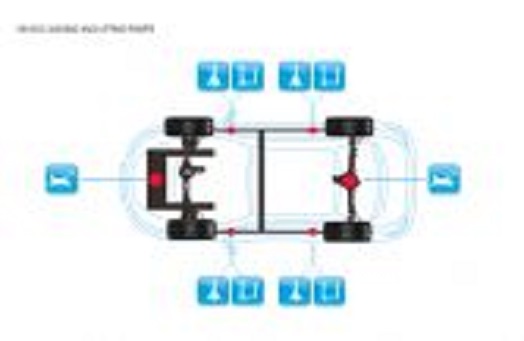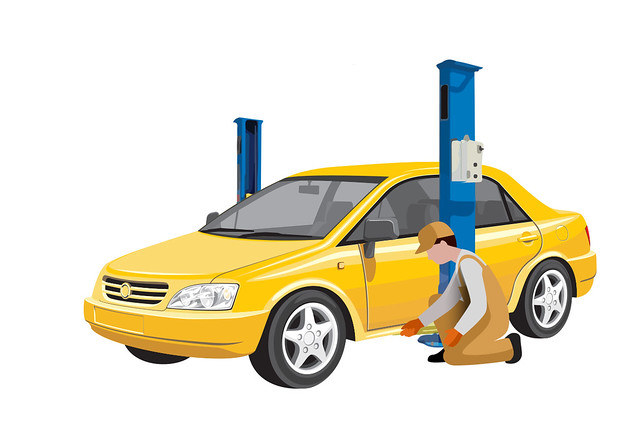This site uses cookies to ensure you get the best experience. Learn more.
Toggle Nav

'

The vehicle lift (or vehicle ramp) is the lifeblood of the vehicle maintenance industry. However, for something so essential to the trade, it can often be easy to take vehicle lifts for granted. As a result, incorrect operation of vehicle lifts, misunderstanding of loading techniques, and lack of maintenance result in accidents every year.
As vehicle lifts will be used in most garages on a daily basis, and as such, it is important for users to put their trust in the equipment. In order to do this, it is essential that anyone operating a vehicle lift knows how to do so correctly and safely.
To help prevent accidents, and promote understanding, the team at Straightset have put together a guide to vehicle lift safety. Covering a range of different vehicle lifts, the guide discusses the purchasing, installation, Service and operation of vehicle lifts, to help you prevent accidents in the workplace. Take a look at the guide below.
Buying a vehicle lift
It is a legal requirement that all machinery sold in the EU, including vehicle lifts, meets certain standards. In order to ensure this, the Directive 2006/42/EC enforced by the European Commission was created, which vehicle lift manufacturers must ensure their equipment complies to.
When purchasing a vehicle lift, make sure that the equipment is CE certified; this means the lift is officially approved by the European Commission, and safe to use. All lifts purchased from reputable suppliers like Straightset will conform to these standards, meaning they are manufactured to safe standards. You can always ask for proof that the lift you are purchasing has been approved; you will be shown a certificate containing the name of the approving body - which should be based in Europe - and the certification number of the equipment.
Installing a vehicle lift
Once a vehicle lift has been purchased, it will need to be installed. In order to make sure that the vehicle lift will operate properly and safely, it will need to be installed to approved standards. Unless you are a competent lift installer, it is never a good idea to install a lift yourself. Not only will this be unsafe and a pathway to accidents the lift most likely will not operate correctly.
Instead, you should always have your equipment installed by an accredited lift engineer, who will have experience and training in installation. That way, you can make sure your lift is installed according to the regulations and the manufacturer instructions.
Operating vehicle lifts
General Advice
Whatever type of lift you are using, you will need to take some general day to day steps and precautions to avoid accidents and injury:
2 Post Lifts
Two post lifts are one of the most commonly used lifts in the UK, so it is important to be fully conversant in how they work, and how to operate them properly. We have put together some of the key points to remember:


Depending on the size and type of the vehicle being lifted, you will need to use either a symmetric or an asymmetric two post lift. Symmetric two post lifts are used to lift larger vehicles like vans, whereas asymmetric lifts are more suited to lifting lighter cars. Symmetric and Asymmetric lifts require different loading procedures.

Asymmetric two post lifts: Short arms to the front, long arms to the rear
Symmetric two post lifts: All four arms of equal length:
Chassis pick up lifts - scissor or in-ground
Chassis lifts raise a vehicle by supporting its chassis rather like a two post lift but without the swinging arms:
Wheel Support platform lifts
For 4-post lifts, most of the previously stated general advice applies. However, they have a different loading technique to two post lifts, and thus a different loading and raising procedure is required:
Vehicle Lift Maintenance
In the auto industry, the vehicle lift is used and relied upon on a daily basis. As such, it only makes sense that regular inspections and maintenance should be carried out, to make sure that lifts are working properly, and that those using them are not at risk due to faults.
Daily Maintenance
At the start of the day, it is good practice to get into a habit of performing a daily inspection on all lifts. You should check for leaks, unadjusted chains and wires, and for any wear and tear on vital parts such as lift pads. If you notice any problems during a check, take precautionary measures and do not use the lift until they are addressed.
Monthly Inspection
A thorough check of all vehicle lifts should be made once a month. You should check that wires and chains are functioning properly without restriction, nuts and bolts are well tightened, and lubrication systems are topped up.
Six Month & Twelve Month Inspections
Biannual inspections are advised by the HSE, whilst the Provision and Use of Work Equipment Regulations state that thorough annual inspections are compulsory under law. This is different to servicing. Always have your lifts serviced by a competent engineer such as a GEA Accredited Lift Engineer.
______________________________________________________________________________
We hope this guide has given you an insight - or a reminder - of the safety procedures necessary when operating vehicle lifts. If you would like more advice on operating or installing vehicle lifts, or would like a vehicle lift installed or serviced by an accredited engineer, get in touch with the team at Straightset to see what we can do for you.